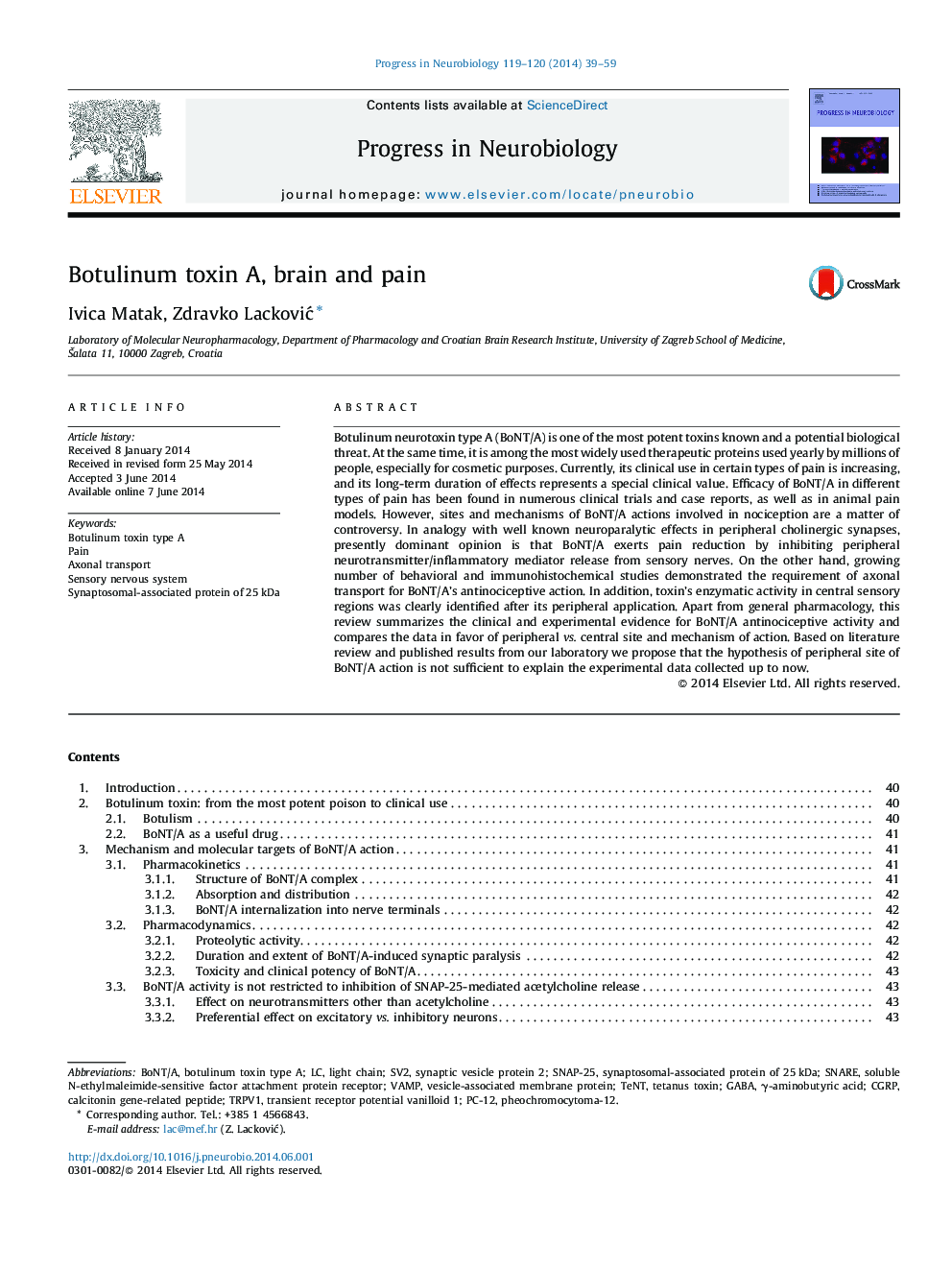| Article ID | Journal | Published Year | Pages | File Type |
|---|---|---|---|---|
| 4353306 | Progress in Neurobiology | 2014 | 21 Pages |
•BoNT/A is therapeutically useful in certain chronic pain conditions and migraine.•Dominant hypotheses assume its exclusive activity on peripheral nerve endings.•However, BoNT/A axonal transport from periphery to CNS has been discovered.•Recent research revealed that BoNT/A action on pain involves a central action.
Botulinum neurotoxin type A (BoNT/A) is one of the most potent toxins known and a potential biological threat. At the same time, it is among the most widely used therapeutic proteins used yearly by millions of people, especially for cosmetic purposes. Currently, its clinical use in certain types of pain is increasing, and its long-term duration of effects represents a special clinical value. Efficacy of BoNT/A in different types of pain has been found in numerous clinical trials and case reports, as well as in animal pain models. However, sites and mechanisms of BoNT/A actions involved in nociception are a matter of controversy. In analogy with well known neuroparalytic effects in peripheral cholinergic synapses, presently dominant opinion is that BoNT/A exerts pain reduction by inhibiting peripheral neurotransmitter/inflammatory mediator release from sensory nerves. On the other hand, growing number of behavioral and immunohistochemical studies demonstrated the requirement of axonal transport for BoNT/A's antinociceptive action. In addition, toxin's enzymatic activity in central sensory regions was clearly identified after its peripheral application. Apart from general pharmacology, this review summarizes the clinical and experimental evidence for BoNT/A antinociceptive activity and compares the data in favor of peripheral vs. central site and mechanism of action. Based on literature review and published results from our laboratory we propose that the hypothesis of peripheral site of BoNT/A action is not sufficient to explain the experimental data collected up to now.
